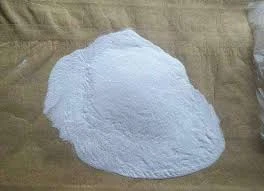Understanding Additive Percentages for Putty A Comprehensive Overview
Putty, often used as a filler or sealant, has become an essential material in various construction and manufacturing sectors. When formulating putty, understanding and managing additives is crucial for optimizing its performance. The term additive percentage refers to the proportion of additional substances mixed into a base material to enhance specific properties. This article delves into the significance of additive percentage for putty, focusing on the types of additives, their functions, and best practices for formulation.
Types of Additives
Putty formulations typically include a variety of additives, each serving distinct roles
. Common types include1. Fillers Inorganic materials such as talc, calcium carbonate, and silica are often added to increase the bulk and improve texture. These fillers can enhance the putty's stability and workability while affecting its drying time and finish quality.
2. Binders These are crucial for providing adhesion and cohesion within the putty. Binders, such as polyvinyl acetate (PVA) or epoxy resins, help to create a strong matrix that holds the filler materials together, leading to improved durability and resistance to wear and tear.
3. Plasticizers To enhance the flexibility and workability of putty, plasticizers like dibutyl phthalate or other compounds are added. They reduce viscosity and increase the putty's ease of application while preventing it from becoming too brittle after curing.
4. Surfactants These additives play a vital role in improving the blendability of different components, ensuring a homogeneous mixture. Surfactants can also enhance the wetting properties of the putty, allowing for better adhesion to surfaces.
additive for putty

5. Accelerators and Retarders Depending on the application, you may want to control the curing time. Accelerators speed up the process, while retarders slow it down, allowing for more extended working times or faster project completions as needed.
Importance of Optimal Additive Percentages
Finding the right balance of these additives is vital. An improper additive percentage can lead to poor performance, such as reduced adhesion, excessive brittleness, or undesirable curing times. For example, too much filler may weaken the structure, while insufficient binder can result in a weak bond. Therefore, manufacturers must conduct thorough testing to determine the optimal ratios for specific applications.
Recommended Practices
1. Conduct Trials Before settling on a formula, it is essential to conduct trials in a controlled environment. Assessing various combinations systematically can help identify the most effective additive percentages for desired attributes.
2. Monitor Environmental Conditions The effectiveness of additives can also be influenced by environmental factors such as temperature and humidity. Proper storage and handling of raw materials can mitigate adverse effects.
3. Documentation and Feedback Keeping detailed records of formulations, applications, and outcomes can assist in refining the putty's formulation over time. Engaging with professionals who utilize the putty can provide valuable insights for further improvements.
In conclusion, understanding additive percentages for putty is fundamental for achieving optimal performance in various applications. By carefully selecting and balancing the right additives, manufacturers can create versatile, high-quality putty that meets the specific needs of their target markets. As technologies and materials continue to evolve, staying informed and adaptable will help ensure ongoing success in this essential area of construction and manufacturing.
-
The Versatility of Industrial Additives: Mhec, Hpmc, And Wall Putty SolutionsNewsMar.28,2025
-
The Importance of HPMC in Modern IndustriesNewsMar.28,2025
-
Partnering with Reliable Manufacturers for Optimal ResultsNewsMar.28,2025
-
Enhancing Construction Performance with Redispersible Polymer PowdersNewsMar.28,2025
-
Enhancing Construction and Household Products with Advanced AdditivesNewsMar.28,2025
-
Building Strong Foundations with Key Construction MaterialsNewsMar.28,2025






